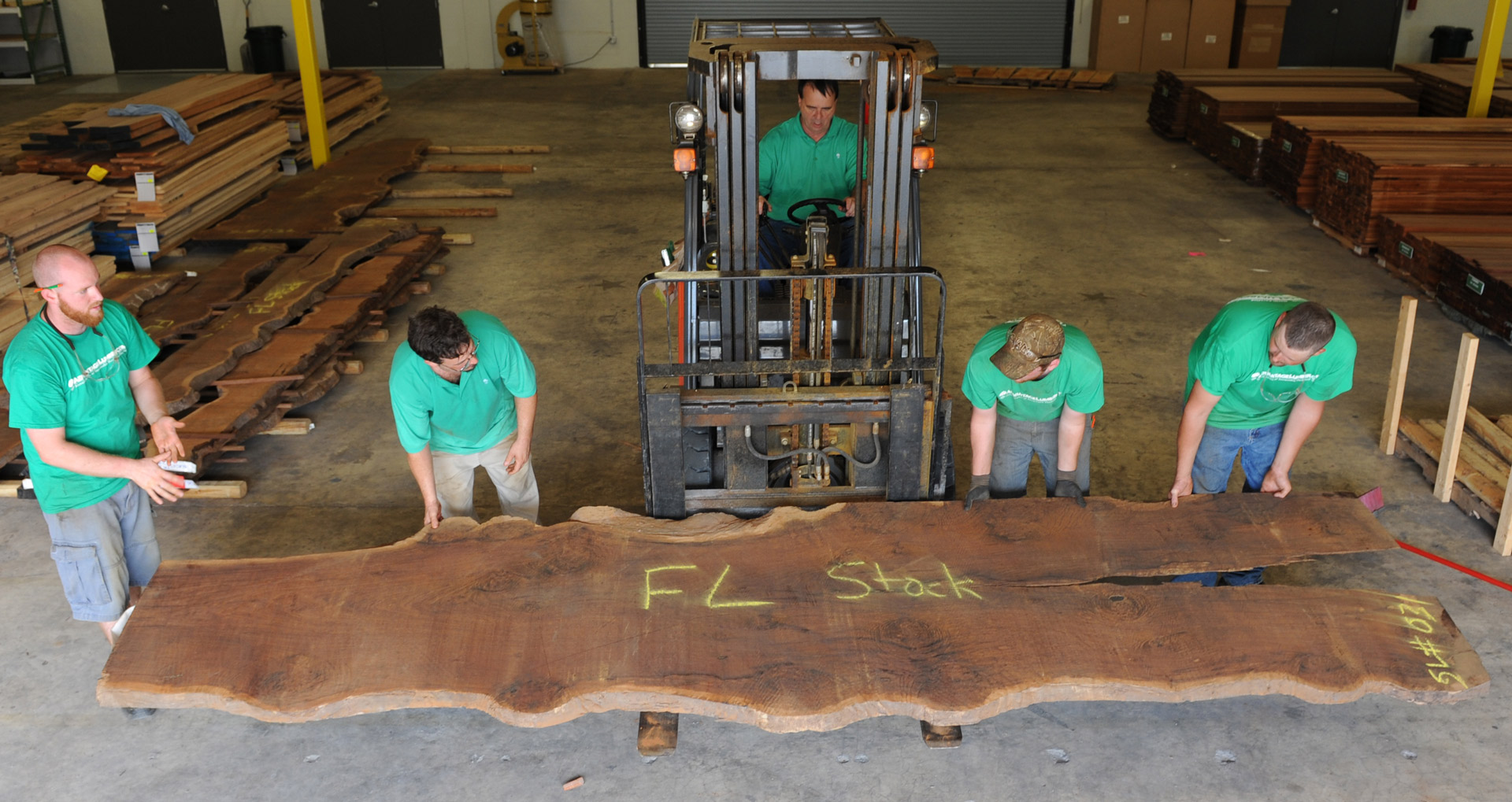
Common Name: | Iron Wood, Lapacho, Brazilian Walnut, or Yellow Poui |
Botanical Name: | Tabebuia spp. |
Indigenous to: | Tropical Americas (Central and South America) it is also farmed commercially. |
Modulus of Rupture: | 25,660 lbf/in2 (177.0 MPa) |
Shrinkage: | Radial: 5.1%, Tangential: 6.4%, Volumetric: .68%, T/R Ratio: 1.3 |
How is it dried: | Info coming soon |
Is it dried quickly: | No A slow kiln drying is recommended in order to reduce defects, especially with thicker boards |
Stability: | Moderately Stable |
Exterior Wood Recommendation: | Species covering the use class 5: Yes This species naturally covers the use class 5 (end-uses in marine environment or in brackish water) due to its high specific gravity and hardness. |
Fastening Method: | Nailing / screwing: good but pre-drilling is necessary Gluing: Yes (for interior only) with special techniques to reduce the oils Note: Gluing must be done with care (very dense wood). |
Ecosystem impact: | This wood species is not listed in the CITES Appendices or on the IUCN Red List of Threatened Species. However, Ipe species grow in very low densities, with mature trees only occurring once per every (3 to 10 hectares) of forest. Though uncommon, certified sources of Ipe are available. |
Toxicity and allergic reactions: | Skin irritant, headache, asthma, vision effects |
Odor: | Ipe has a very light mild scent while being worked. |
Products we manufacture using this species: | Deck Tiles, Decking, Rainscreen, Dimensional lumber |
Other common uses: | Cabinetwork (high class furniture)Sliced veneer Furniture or furniture components Sleepers Bridges (parts in contact with water or ground) Industrial or heavy flooring Ship building (planking and deck) Poles Stakes Hydraulic works (fresh water) Moulding Bridges (parts not in contact with water or ground) Stairs (inside) Heavy carpentry Turned goods Musical instruments Tool handles (resilient woods) Vehicle or container flooring Hydraulic works (seawater) Note: Filling is recommended to obtain a good finish. |
Susceptibility to | |
Dry Wood borers: | Durable – sapwood demarcated (risk limited to sapwood) |
Fungi: | Class 1 – very durable |
Termites: | Class D – durable |
Treatability: | Class 4 – not permeableAgainst dry wood borer attacks: does not require any preservative treatment In case of risk of temporary humidification: does not require any preservative treatment In case of risk of permanent humidification: does not require any preservative treatment |
Janka Hardness: | 3680 lbf (25,860 N) |


